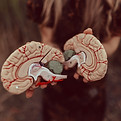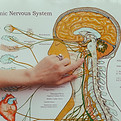
“Resilience is the capacity to
rapidly return to an autonomic state of calmness following a challenge”
Stephen Porges
Reslience of the Autonomic Nervous System is the ability to move adaptively in and out of the three states.
WHEN CONFRONTED WITH A CHALLENGE OUR CLIENTS MAY GO INTO:
SYMPATHETIC STATE
OR
DORSAL VAGAL STATE
Resilience reflects a physiological state.
In this state we experience safety, trust, feelings of compassion, benevolence, and generosity.
These feelings enhance connectedness and fulfill our biological imperative. Clients who feel more of these emotions tend to also feel more well.
“The ability to return to ventral vagal state is the essence of resilience”
Deb Dana
What do resilience and feelings of safety have in common?
Resilience and feelings of safety share a common neurophysiological substrate. A neural substrate is a term used in neuroscience to indicate the
part of the central nervous system (i.e., brain and spinal cord) that
underlies a specific behavior, cognitive process, or psychological state.

Able to co-regulate

Feeling trusting

The ability to engage with others

Feelings of restoration

Belief in one’s ability to navigate adversity

Pro-social

Feelings of stable health

Emotional homeostasis

Desire to connect with others
Narratives of resilience emphasize that there is a more integrative mechanism involved that is linked to fulfilling the biological imperative of social connectedness.
“Therapy becomes a platform to exercise the capacity to shift state by recruiting features of the social engagement system to keep the autonomic nervous system out of a prolonged state of defense”